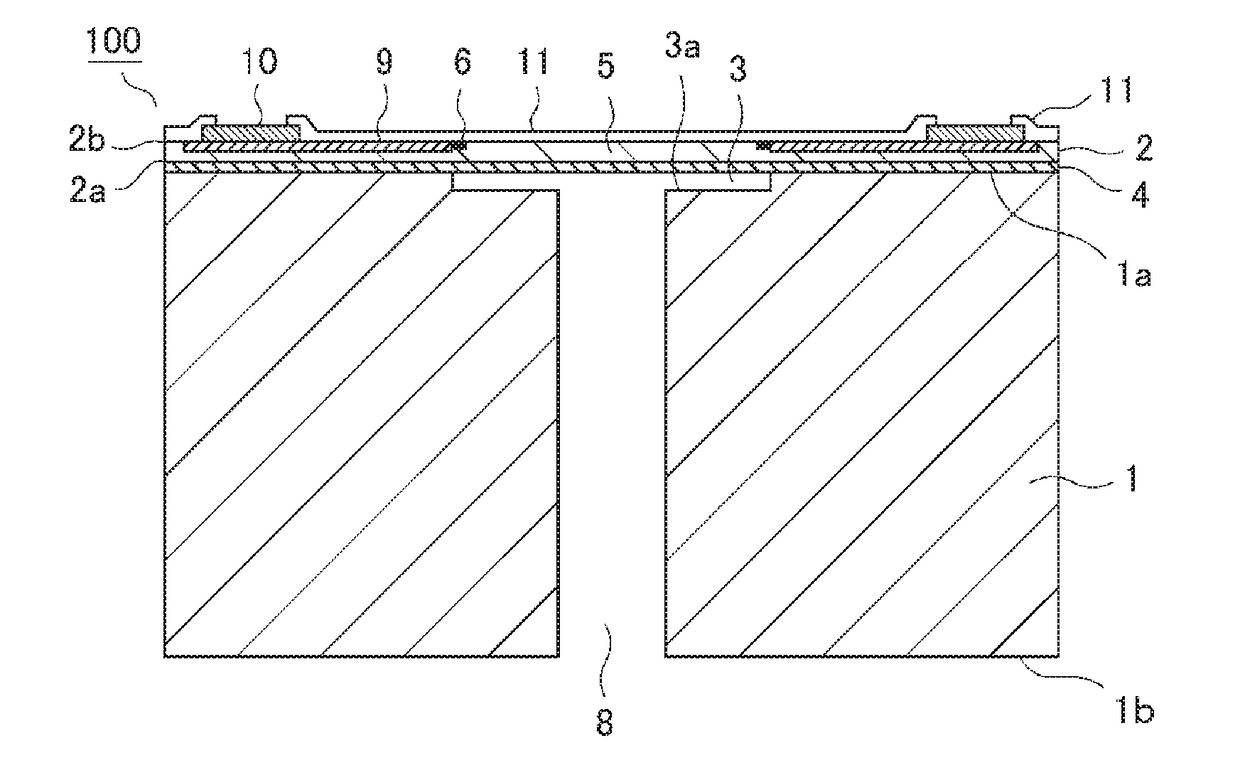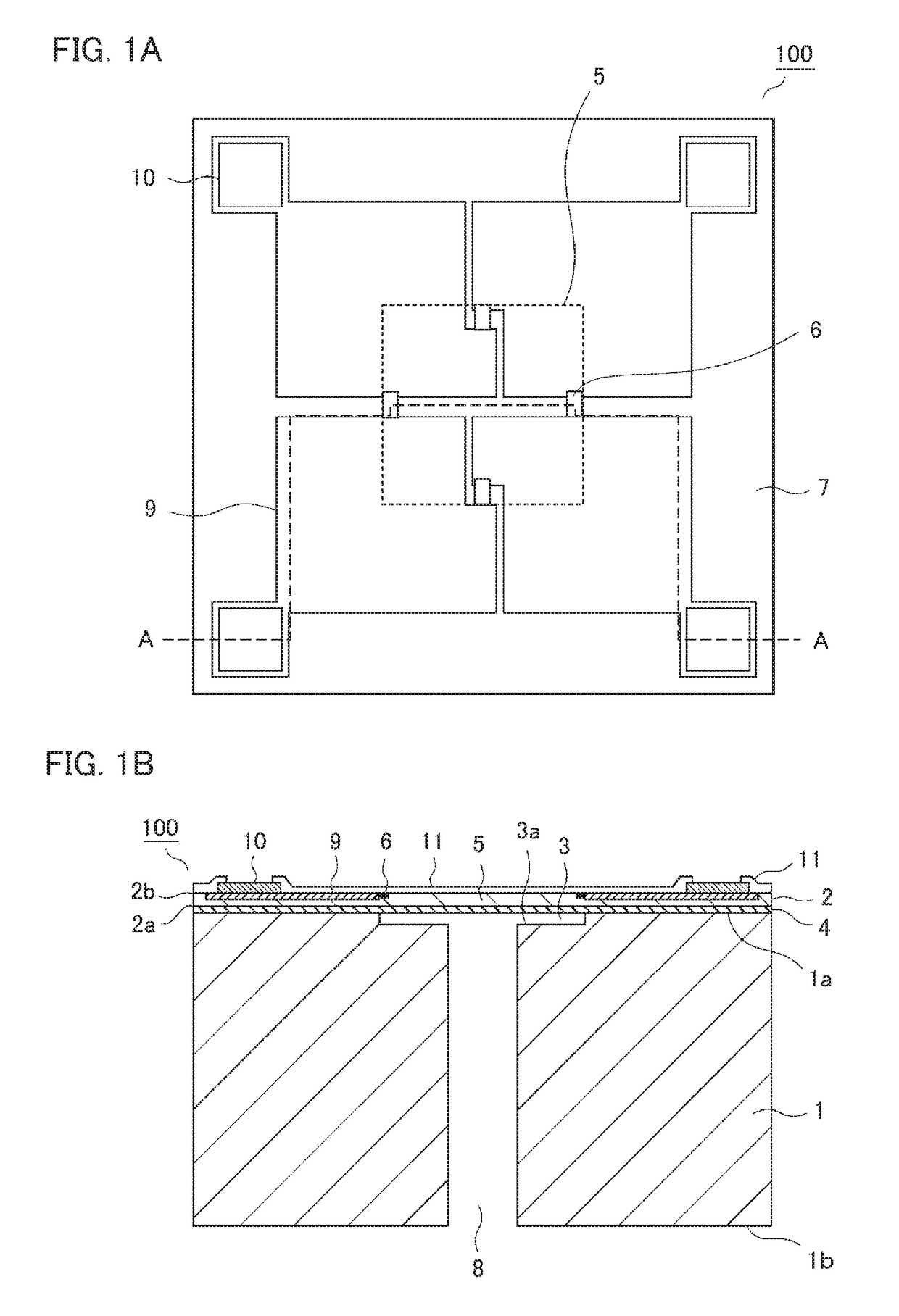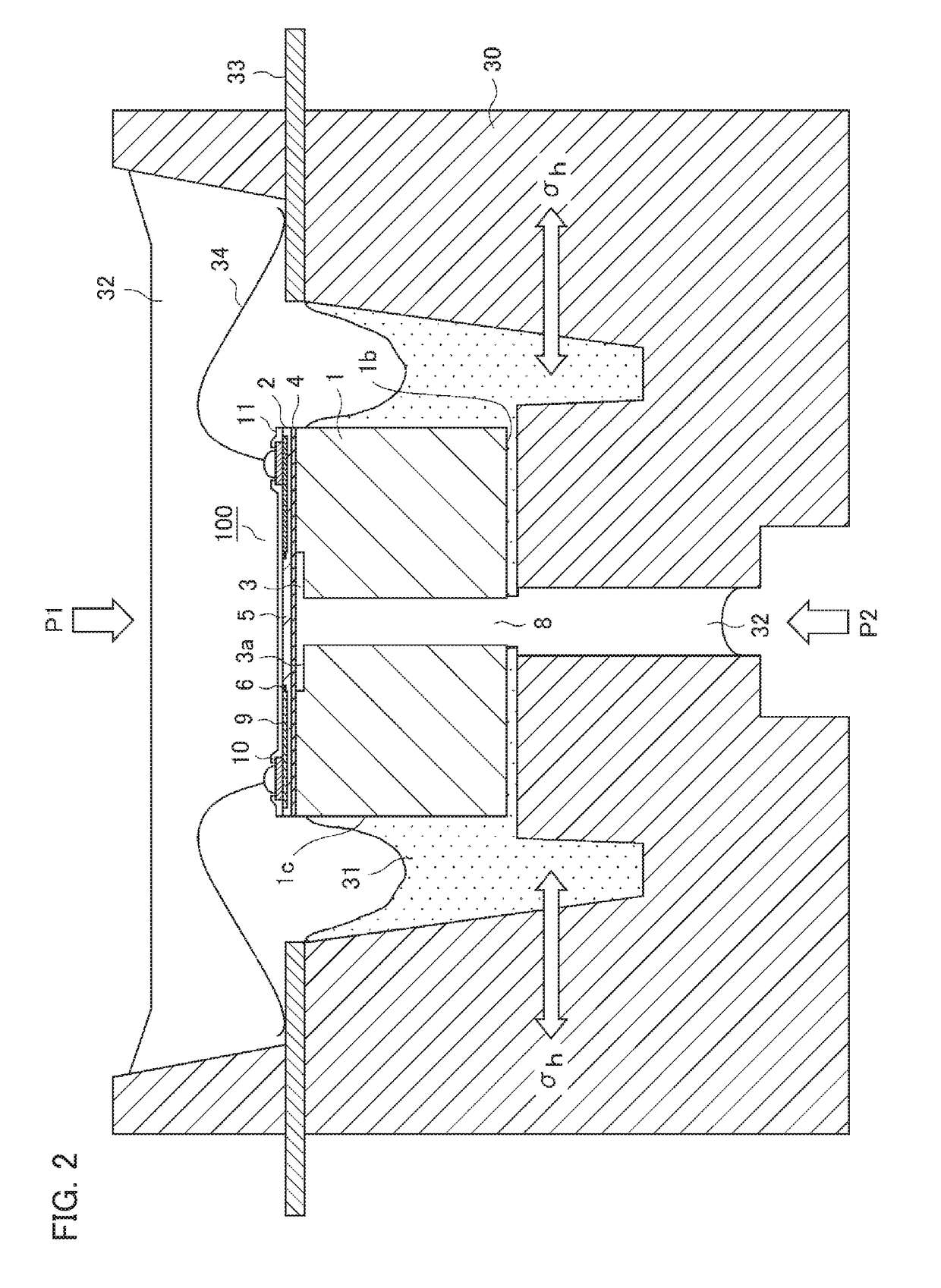Semiconductor differential pressure sensor and manufacturing method of the same
a technology of differential pressure sensor and semiconductor, applied in the direction of fluid pressure measurement, fluid pressure measurement by electric/magnetic elements, instruments, etc., can solve the problems of thermal strain measurement error, insufficient simply applying die bonding material to the lower surface side of the sensor chip, and difficulty in obtaining the desired function, etc., to achieve high reliability, high precision measurement, and stable carry
- Summary
- Abstract
- Description
- Claims
- Application Information
AI Technical Summary
Benefits of technology
Problems solved by technology
Method used
Image
Examples
first embodiment
[0046]Hereafter, a description will be given, based on the drawings, of a semiconductor differential pressure sensor according to a first embodiment of the invention. FIG. 1A is a plan view showing the semiconductor differential pressure sensor according to the first embodiment, FIG. 1B is a sectional view of the portion shown by A-A in FIG. 1A, and FIG. 2 is a sectional view showing an assembly structure of the semiconductor differential pressure sensor according to the first embodiment. In the individual drawings, identical and equivalent portions are given identical signs.
[0047]The semiconductor differential pressure sensor according to the first embodiment includes a semiconductor differential pressure sensor element 100 wherein one main surface 1a of a first semiconductor substrate 1 and one main surface 2a of a second semiconductor substrate 2 are bonded together via an oxide film 4. The first semiconductor substrate 1 has a depressed portion 3 provided in the main surface 1a ...
second embodiment
[0071]FIG. 7A is a plan view showing a semiconductor differential pressure sensor element according to a second embodiment of the invention, and FIG. 7B is a sectional view of the portion shown by C-C in FIG. 7A. As the assembly structure of a semiconductor differential pressure sensor according to the second embodiment is the same as in the first embodiment, FIG. 2 is used. A semiconductor differential pressure sensor element 100A according to the second embodiment has stress relaxation grooves 13 which are disposed, in the vicinity of the strain sensitive elements 6, along the shape of the diaphragm 5. As other configurations are the same as in the first embodiment, a description will be omitted.
[0072]The stress relaxation grooves 13 are provided around and along the depressed portion 3 of the one main surface 1a of the first semiconductor substrate 1. In this way, by providing the stress relaxation grooves 13 along the boundary of the diaphragm 5, the thermal stress caused by exp...
third embodiment
[0076]FIG. 9 shows an assembly structure of a semiconductor differential pressure sensor according to a third embodiment of the invention. A semiconductor differential pressure sensor element 100C according to the third embodiment, as well as having an overhanging portion 14, which is a stepped portion, on the side surface 1c of the first semiconductor substrate 1, has minute trough-crest shaped regions 15 and 15a on the side surface 1c and main surface 1b. As other configurations are the same as in the first embodiment, a description will be omitted.
[0077]In a semiconductor differential pressure sensor, in order to ensure the hermetic separation between the front and rear thereof, a die bond material is thickly applied to not only the rear surface, but also the side surface, of a semiconductor differential pressure sensor element. Because of this, in a heretofore known semiconductor differential pressure sensor manufacturing method, there is the problem that variation occurs in the...
PUM
| Property | Measurement | Unit |
|---|---|---|
| Pressure | aaaaa | aaaaa |
| Area | aaaaa | aaaaa |
| Stress relaxation | aaaaa | aaaaa |
Abstract
Description
Claims
Application Information
 Login to View More
Login to View More - R&D
- Intellectual Property
- Life Sciences
- Materials
- Tech Scout
- Unparalleled Data Quality
- Higher Quality Content
- 60% Fewer Hallucinations
Browse by: Latest US Patents, China's latest patents, Technical Efficacy Thesaurus, Application Domain, Technology Topic, Popular Technical Reports.
© 2025 PatSnap. All rights reserved.Legal|Privacy policy|Modern Slavery Act Transparency Statement|Sitemap|About US| Contact US: help@patsnap.com



